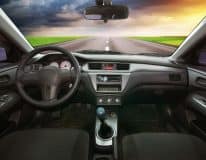5 Safety Advancements that the Government Wants in Every Car
The safer your car, the less you’ll pay for auto insurance, but not every car sold has the latest safety features. Additions like automatic lane departure warnings or adaptive cruise control are already available, but only for more expensive, luxurious vehicles. This makes sense – advanced safety features cost money, so it’s no surprise that less expensive cars have fewer of these features, but accident investigators at the National Transportation Safety Board are fighting to make many of these features a legal requirement in all new cars manufactured.
With the release of their yearly 10 Most Wanted List, the NTSB announced their campaign to raise the standard of safety upheld by auto manufacturers. Taking a staunch stand on this issue, the agency recognizes the high cost of this proposal, but is confident that the inclusion of new safety features could reduce traffic fatalities by half.
The five technologies that follow are at the top of the NTSB’s Most Wanted List, making them the most likely to be required if the NTSB’s campaign is successful.
1. Lane Departure Warning
More common than the other items on this list, lane departure warnings have been available in cars since 2001, and since then, the simple audible warning has evolved into a system that can actually take control of your steering wheel and correct your bearing if it senses danger. Less expensive versions of this system may simply notify drivers if it’s unsafe to switch lanes, but experts predict that adding this feature could costs as much as $3,000 per car. Systems like this inadvertently make you a safer driver, and that could lower your liability insurance rates, but the initial investment could scare some buyers off.
2. Forward Collision Warning
Found mostly in more expensive vehicles, forward collision warning systems take advantage of an array of sensors that will alert the driver when other vehicles stop too quickly or enter your blind spot. Particularly useful in preventing rear-end collisions and making it safer to drive through fog, this technology is still missing from most vehicles. Luckily, adding this feature may be as inexpensive as $1,000 per car.
3. Adaptive Cruise Control
We talk about self-driving cars a lot, but many consumers aren’t aware that you can already buy a “self-driving car”. Completely autonomous cars still aren’t available to the public, of course, but vehicles with adaptive cruise control can already provide the basic autonomous experience under certain conditions. In simpler terms, a variety of sensors allow the vehicle to accelerate, brake, turn, and switch lanes without human intervention, but only on the highway. While interesting, this is an extremely expensive and fairly recent technology that we likely won’t see in budget vehicles for some time. All the same, the NTSB thinks it should be standard, and when you consider the lives it would save, it’s easy to see why.
4. Automatic Braking
Automatic braking systems are capable of preventing serious injury or death before a collision ever occurs. Also known as “pre-collision systems”, these automatic braking systems are simple and unobtrusive, simply applying the brakes in dangerous situations without human input.
5. Electronic Stability Control
This system might not sound as futuristic as adaptive cruise control, and it may not be as advanced as many of the other options on this list, but it might be the most essential and cost-effective option. By automatically applying the brakes, a vehicle with electronic stability control can sense high-pressure situations and help you regain control of your vehicle under poor driving conditions.
What technologies do you think should be required in all vehicles manufactured? Are you worried about the increasing cost of budget vehicles? Let us know in the comments section below, and call or click today for all of your California auto insurance needs.



